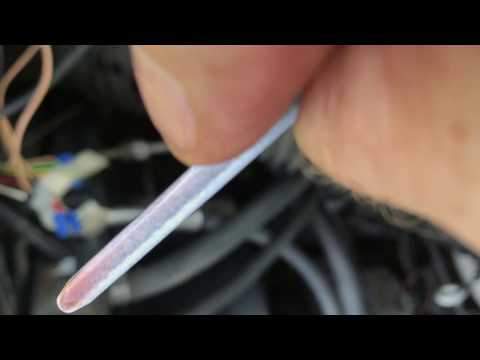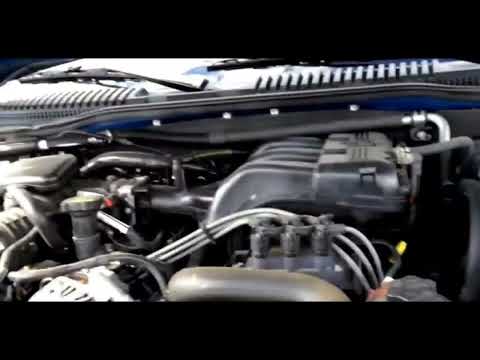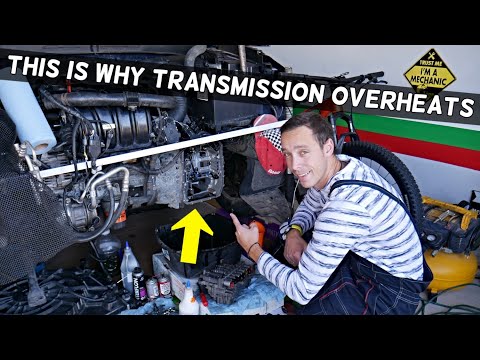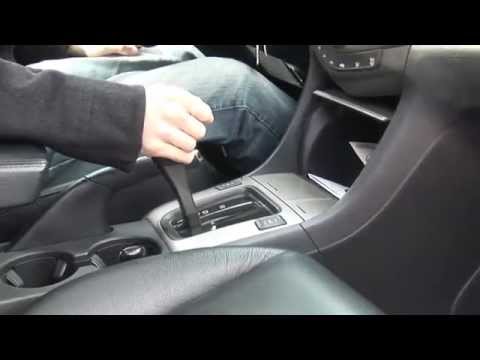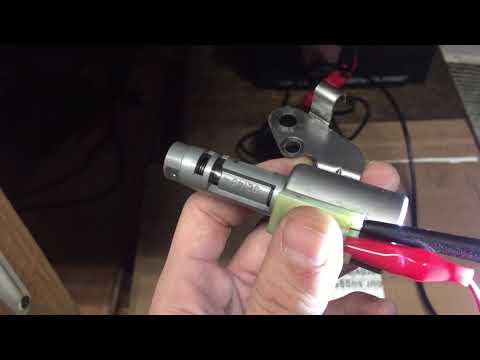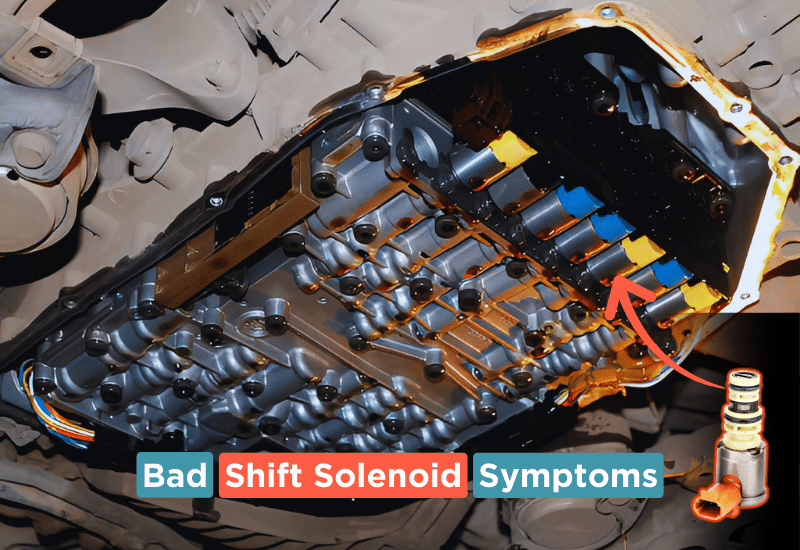
A transmission shift solenoid is one of the most important yet least understood components inside an automatic transmission. It works off signals from the Transmission Control Module (TCM) to divert transmission fluid to help change gears.
Signs of a bad or failing shift solenoid often show up as a hesitation when shifting gears, followed by a hard shift. Sometimes a bad shift solenoid will leave you stuck in neutral, revving the engine, even though the gear selector is in Drive.
Though these can also be signs of other transmission problems, to find out if your car truly does have a bad shift solenoid, we’re going to have to shift our focus to how the transmission works and the solenoid’s role in making gear changes.
What Does a Transmission Shift Solenoid Do?
Both manual and automatic transmissions have shift solenoids that help control the flow of transmission fluid. Though the specific way it operates can vary between the two different types of transmission.
The shift solenoid activates based on an electrical signal from the TCM, which tells it exactly when to transfer fluid in and out of the transmission. This plays a critical role in how the transmission changes gears up and down.
How a Shift Solenoid Works in an Automatic Transmission
In an automatic transmission, the shift solenoid actively helps shift the gears without you having to make any changes to the selector. The car’s TCM simply takes the information from the engine as well as various speed sensors to decide when to shift gears for optimum power and fuel efficiency.
It then sends electrical voltage telling the shift solenoid to allow transmission fluid into the valve body to pressurize clutch packs and bands. This, in turn, activates specific gear changes.
Most cars with an automatic transmission have at least three transmission shift solenoids named A, B, and C. However, some go higher in letters up to E. Each lettered solenoid is associated with a corresponding gear change from 1 to 2, 2 to 3, and 3 to 4.
Causes of a Bad Transmission Shift Solenoid
Problems with the transmission fluid or the TCM are the most common reasons why shift solenoids will fail or activate intermittently. They’re made from robust steel and have a smooth cylindrical shape which doesn’t make them prone to failure without some other transmission fault being at play.
1. Dirty Transmission Fluid
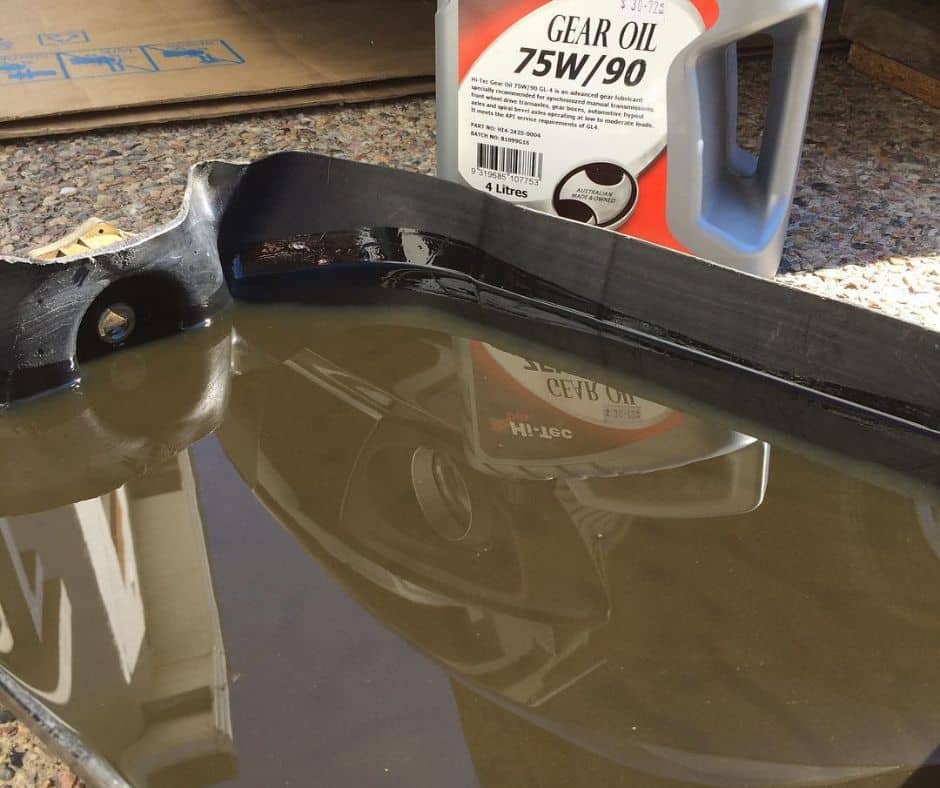
Transmission fluid degradation due to age or overheating is the most common cause of shift solenoid problems. Transmission fluid acts both as a lubricant for moving parts like the shift solenoid and the gears. It also helps transmit fluid pressure when the solenoid activates to activate the valve body.
Degraded transmission fluid fails to lubricate the entire transmission properly and will look dark rather than light pink. This can cause the cylindrical shift solenoid to get stuck, unable to activate when the TCM tells it to.
Contaminated transmission fluid with debris or metal flecks in it can also cause a shift solenoid to get stuck or become unresponsive. In a case like this, though, the metal flecks are caused by gears grinding, and the stuck solenoid is just a secondary symptom of a much more serious transmission problem.
2. Low Transmission Fluid
Low transmission fluid can make it hard for the shift solenoid to divert the necessary pressure to the valve body to shift gears. In a case like this, the shift solenoid itself might respond, but the desperately low transmission fluid causes delayed shifting from low pressure. You’ll often notice this as hesitation in gear shifts, with the engine revving higher than usual. When it does finally shift, the change is hard, and you might even hear a disturbing “Clunk.”
It’s also possible that the low transmission fluid doesn’t provide enough lubrication, and simple friction and a hot transmission prevent the shift solenoid from moving. In a scenario like this, you might find the car stuck in neutral despite Drive being selected on the steering column. It might also get stuck in one gear like first and will not shift out of it on its own.
3. A Wiring Problem
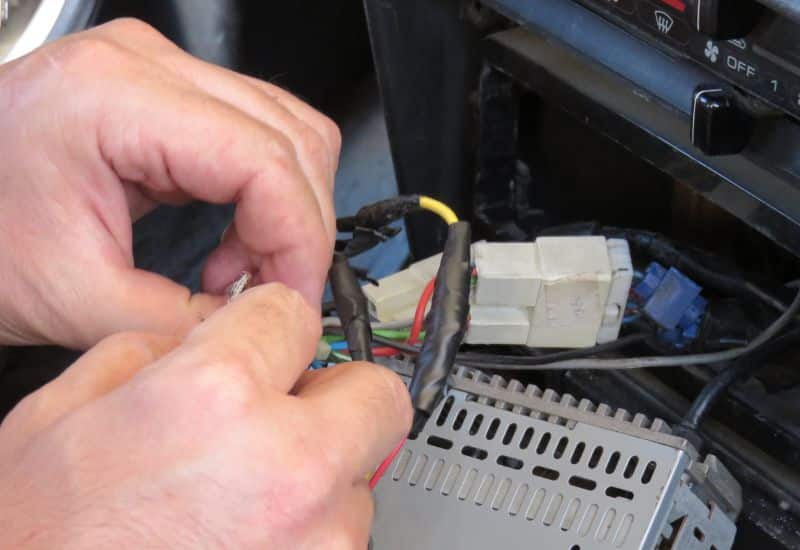
If there’s a short or loose connection in one of the wires between the TCM and the transmission solenoid pack, the shift solenoid might not even get the signal to activate. The solenoid itself might be perfectly fine, but its internal electromagnet can’t operate without sufficient current.
If it’s a loose wiring connection, the transmission shifts normally sometimes. Then you go over a speed bump or a set of railroad tracks, and suddenly it won’t change gear, or the engine revs high before shifting hard.
4. Wear & Tear Over Time
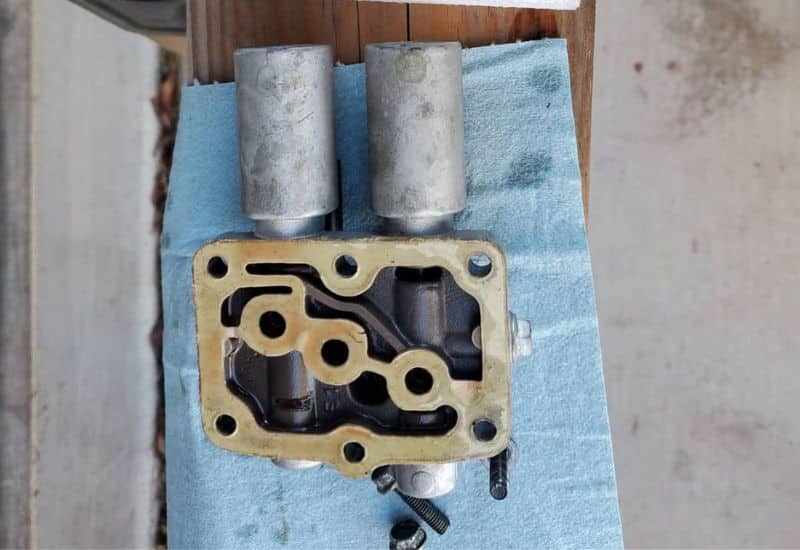
Solenoids rarely fail from their own wear and tear on their own shift. Instead, another transmission problem, such as a bad valve body, excessively stresses the shift solenoid’s seals or O-rings. This affects the pressure the solenoid can affect, causing it to fail or get stuck, or it doesn’t respond at the right time.
The exact fault that’s stressing the shift solenoid will vary the symptoms. However, it’s often a fault in the valve body, which will manifest as hesitating shifts, or the transmission getting stubbornly stuck in one gear.
5. A TCM Problem
A problem with the TCM can prevent the shift solenoid from getting the voltage it needs to activate, or it could cause excess wear and tear on the solenoid itself. This will often manifest as erratic or poorly timed gear changes or the transmission getting stuck in one gear. Most of the time, a TCM problem will also cause a check engine or check transmission light to come on.
Sign or Symptoms of Bad Shift Solenoid
Early signs of a bad shift solenoid, like hesitant gear changes or hard gear changes, might not immediately set off warning bells in your head. Though more major problems like the transmission dumping gears, getting stuck in an inappropriate gear, or getting stuck in neutral are serious causes for concern.
1. Dark or Contaminated Looking Transmission Fluid
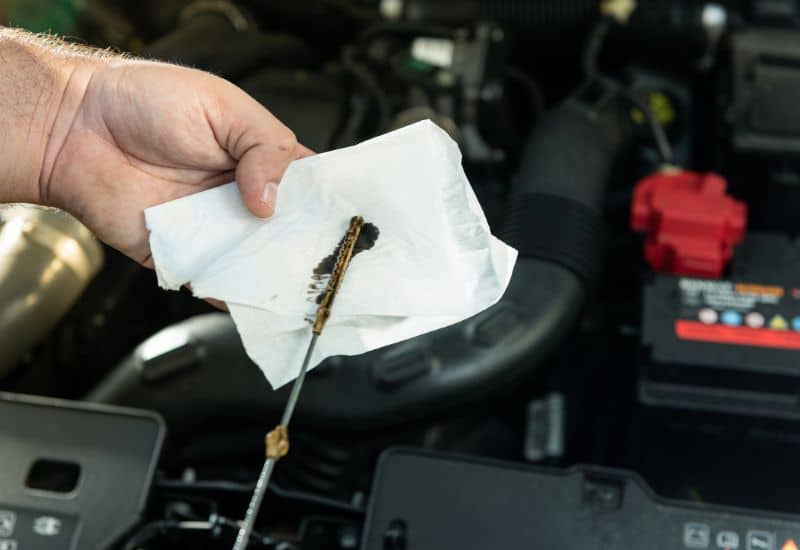
If you’ve noticed signs of a shift solenoid problem, you should check the color and consistency of your transmission fluid. Transmission fluid that looks dark, is low, or has visible signs of contamination, such as metal flecks suspended in the oil, is one of the most common signs and causes of a shift solenoid problem.
If it’s just that the fluid is old or degraded, you might get away with a transmission fluid flush and fill. If it has metal flecks in it, then the contaminated transmission fluid and the shift solenoid acting up is just a secondary symptom of a more serious problem.
2. Hesitating Gear Changes

If the shift solenoid isn’t activating on cue from the TCM, it can cause delays or hesitant gear changes. This is often more noticeable when you need the transmission to shift up from first to second. However, there can also be a less noticeable pause when you need the transmission to change down, like when you step hard on the brakes.
This is often due to a delay in the shift solenoid activating or a delay in the fluid pressure passing through the valve body. Once the correct pressure is achieved, the valve body can activate the clutch packs or bands necessary to change the gear. Though by the time this happens, the RPMs of the engine might not be in the ideal range for the next gear the TCM selected.
3. Hard Gear Changes

Hard gear changes after a slow change up or down are another strong indicator of a shift solenoid problem. You’ll often hear a clunking sound, and the car might lurch for a moment as it grabs the next gear. Again, it can happen when you’re going up or down the tree, but you’re more likely to notice it shifting from first to second.
In some cars, hard downshifts with normal upshifting can mean that the problem is isolated to just the downshifting solenoid. This is just one solenoid in the entire transmission solenoid pack. You’re most likely to notice an issue like this if you’re coasting to a stop and the road has a mild incline. At some point, before you step on the brakes, the transmission downshifts with a soft “Clunk.”
4. The Transmission Gets Stuck in One Gear
If the shift solenoid gets stuck closed, it blocks the fluid from getting to the valve body, and the transmission won’t be able to change gears at all. Without the pressurized transmission fluid, the valve body can’t activate the clutch packs and bands for the corresponding gear.
5. Transmission Overheating
When the transmission fluid isn’t flowing through the shift solenoid correctly, it can affect performance, causing the transmission to overheat. Depending on where the fault is in the transmission solenoid pack, it can also impede the natural flow of transmission fluid to the radiator. Without a way to effectively dissipate all the heat energy from gear friction and moving components, the entire transmission starts to get hotter and hotter.
This can also be a double whammy, as the lubricating properties of transmission fluid start to break down once it gets over 220 to 240 degrees. This can lead to cascading damage throughout the transmission and a much higher repair bill than if it had just been a solenoid problem!
6. A Transmission Fluid Leak

Transmission fluid can leak out of the transmission housing if a solenoid seal or O-ring fails. Depending on where the failure occurs, the leak can be a slow drip or a mildly pressurized stream that you’ll notice getting worse when you have the car in gear.
7. Transmission Slipping at Random
When the fluid inside the transmission can’t pressurize at the correct time due to a slow-acting or stuck solenoid, it can cause the gears to slip. If the solenoid problem is compounded by low or degraded transmission fluid, it could also be that the filter can’t pick up enough fluid to pressurize in time with the RPMs of the engine.
This could cause the transmission to slip down a gear at the wrong time or could cause it to slip from first down into neutral. Even if you still have it in Drive.
The added worry here is that all this slipping of gears can also cause grinding noises as gears don’t work together correctly. This can damage multiple gears, making whining, grinding, or whirring noises. You might also notice metal flecks in the transmission fluid.
8. Poor MPG
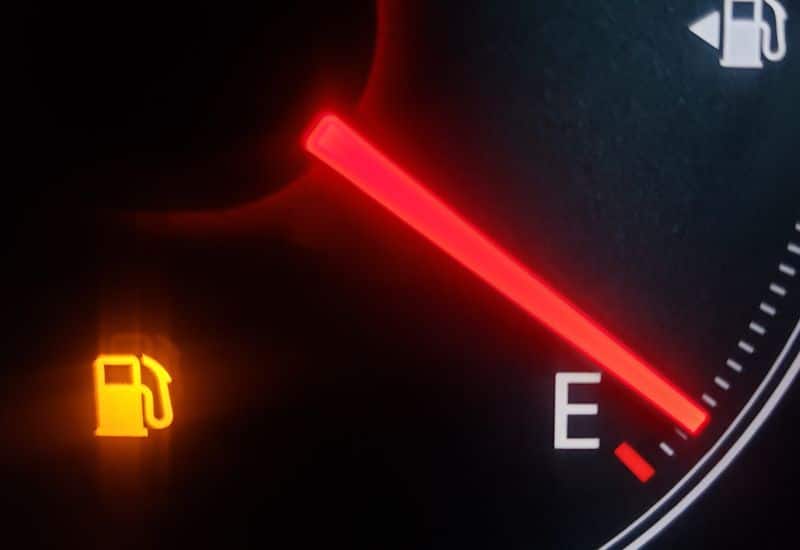
The car revving up and the transmission failing to change into the right gear at the correct time leads to increasingly poor fuel economy. Sometimes this can even cause an occasional misfire, or the exhaust starts to give off fuel odors. However, these red herrings might trick you into thinking that it’s a problem with the engine when it’s a problem with the shift solenoid.
9. The Car Goes into Limp Home Mode
Some newer vehicles will put the car into a limp home mode when there’s a transmission problem to help protect it and the engine from being damaged by performance issues. This will cause the car to feel down on power, the RPMs on the tachometer will be limited, and the transmission might not go beyond second gear.
10. The Check Engine or Check Transmission Light Comes On
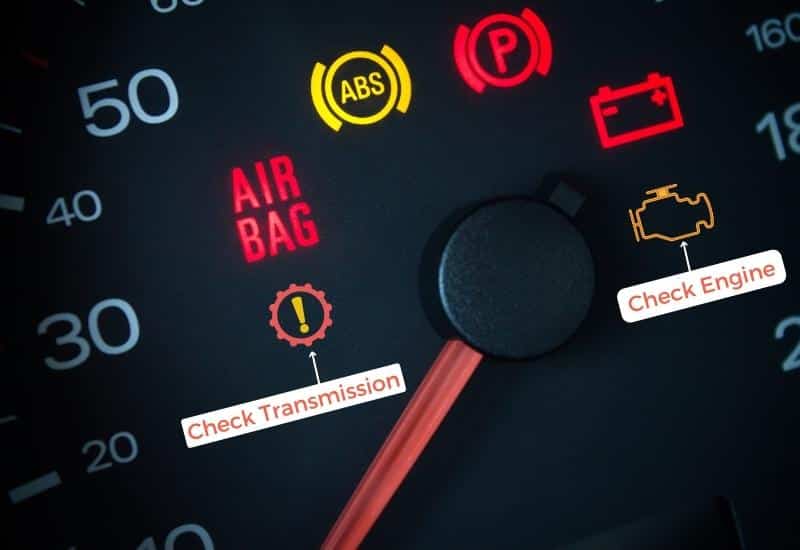
If your car has a check transmission light, you’ll see a little red gear light with an exclamation point come on in the dash display. Otherwise, the check engine light will come on and likely throw a bunch of codes, depending on what other problems occurred. Though there are a few to keep your eyes out for that will clue you into the real problem being in the shift solenoid itself.
Common Transmission Shift Solenoid Error Codes
There are several codes that specifically indicate a shift solenoid problem. Each code indicates which solenoid(s) are having a problem.
Codes P0750, P0755, P0760, P)765, and P0770 indicate specific shift solenoids that are often labeled A thru E. If you get just one of these codes, it might be the single solenoid itself has a problem.
Most automatic transmissions have at least three shift solenoids A, B, and C. Each lettered solenoid is associated with a corresponding gear change in a three-speed automatic transmission.
If you get multiple shift solenoid codes, the ECU or TCM is trying to tell you there’s a system-wide fault, such as bad transmission fluid.
How Do You Test a Shift Solenoid?
Testing a transmission solenoid to confirm it’s a problem starts with pulling the corresponding solenoid that threw a code. You can then test it with a multimeter using the following steps.
If it gives you numbers that are grossly out of range, then the solenoid itself is bad. If the solenoid tests in range, then there is likely another transmission fault affecting solenoid performance. The most likely culprit is a problem with the TCM.
Shift Solenoid Repair and Replacement Cost

Having a transmission specialist replace a single bad shift solenoid can run you around $120 to $240 per solenoid. This is roughly $25 to $100 for the part and then another $75 to $125 for the labor.
Though oftentimes, it makes sense to have the entire solenoid pack replaced. Usually, when one goes bad, it affects the others, or the others are about to go have a problem shortly, especially if the fault was caused by degraded or contaminated transmission fluid.
The cost to replace an entire solenoid pack ranges from $250 to $650. Most of this is the cost of the additional parts. Most of the labor in the job is accessing the solenoids, which is relatively the same whether the mechanic is replacing one or the entire pack.
Replacing a shift solenoid or transmission solenoid pack is usually just outside the realm of what the average DIY mechanic can handle, especially if there are signs of other transmission problems, such as metal flecks in the transmission fluid caused by grinding gears.
Can Replacing Bad Transmission Fluid Fix My Solenoid Problem?
If your shift solenoid problems are due to badly degraded transmission fluid, a complete flush and fill might be all you need to get the solenoids working properly again. However, this is only if the fluid is the only problem. If metal flecks are contaminating the transmission fluid from grinding gears, a bad TCM, or other faults causing the solenoids to fail, then replacing the transmission fluid won’t do much.
Frequently Asked Questions
Where Are The Shift Solenoids?
The shift solenoids or transmission solenoid pack is usually underneath the car near the transmission oil pan and the valve body. If you take the transmission oil pan off, you’ll usually find them sitting beside or near the transmission oil filter.
Can you drive with a bad shift solenoid?
Driving with a bad shift solenoid is a bad idea. The hesitation in shifting, the hard gear changes, as well as the way it stresses both the engine and the transmission can cause unnecessary damage. Not to mention the very real risk of the transmission getting stuck in a grossly incorrect gear or slipping into neutral and getting stuck there.
Does a shift solenoid affect acceleration?
A bad shift solenoid will affect the car’s acceleration in different ways depending on which solenoid(s) are failing. If it’s solenoid A, which governs first gear and the change up into second, the acceleration will be sluggish and rough, even from something as simple as setting off from a stop sign.
If it’s a single shift solenoid higher up in the tree, such as solenoid D, and all the other shift solenoids are operating properly, you might only notice a hesitation in shifting at the higher gears from 4th and above.
How do you reset a shift solenoid?
Resetting a stuck shift solenoid takes a few minutes and might help the transmission release a stuck gear or get it to shift out of neutral again. You can do this using the following steps.
Depending on what’s causing the fault, this might get the shift solenoids working again. Though this is usually a quick fix to help get you home or to a mechanic. It’s rarely a long-term fix.
Do Manual Transmissions Have a Shift Solenoid?
Cars with a traditional manual transmission don’t usually have shift solenoids, as the gears are changed via the manual clutch. However, paddle-shifting gearboxes with flappy paddles on the steering wheel or column do have shift solenoids that adjust without involving a traditional manual clutch pedal.
Conclusion
Degraded or contaminated transmission fluid is the most common cause of transmission shift solenoid problems. This usually manifests as hesitation in the gear changes or the transmission being stubbornly stuck. When it does finally shift, the RPMs of the engine usually aren’t in the ideal range, which makes the gear change hard or might cause the engine to rev way too high.
You might also hear grinding noises as the transmission gears wear on each other without proper lubrication. If the transmission performance gets too ugly, the ECU might then put the car into the limp home mode to minimize the damage caused by the gear changes.
Though it’s also possible for other faults, like a bad TCM or wiring shorts, to be the root cause of your shift solenoid issues, when this happens, you’ll likely get a check engine or check transmission warning light telling you to stop driving the car until you can figure out the problem.

Written By
Jason Farrell
Jason Farrell is a certified master technician, the editor of Mechanic’s Diary in Pittsburgh, Pennsylvania. He is ASE (Automotive Service Excellence) certified and earned a Bachelor’s Degree in Automotive Technology from Pittsburg State University. With nearly 18 prior years of experience in the automotive field, he has extensive knowledge about Domestic, European, and other foreign makes and models of cars and light trucks. Jason’s experience working as a technician and service manager at dealerships, gave him the experience and know-how of most aspects of inspection, diagnosis, and repair from engine and drivability to electrical, HVAC, brakes, steering and suspension and everything in between.


